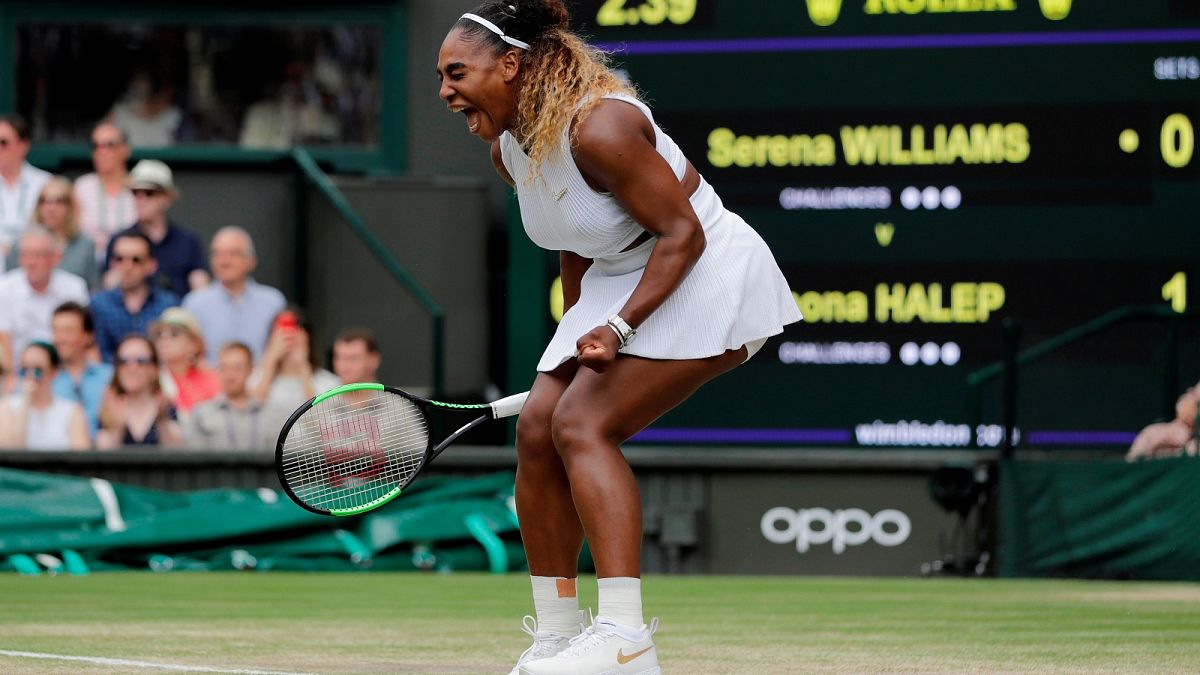Expecting women to deliver the kind of intensity and theatrics that can build over five sets — when they have nearly half the time to do so — is laughable.
On Saturday, Serena Williams took on Simona Halep in the women's final at Wimbledon. Williams lost quickly to Halep in straight sets, 6-2, 6-2. But even before the two took to the court, it seemed that the most dramatic narrative from this year's tournament has already run its course. I watched most of the Wimbledon women’sthird-round match between 15-year-old American Cori “Coco” Gauff and Slovenia’s Polona Hercog in open-mouthed disbelief. Gauff, the youngest player to qualify for Wimbledon in the Open era, ousted her living idol days earlier in the first round and staved off two match points to defeat Hercog in a deciding third set.
It was the performative drama Nike commercials are made of. The entirety of Wimbledon’s Henman Hill, Gauff’s hometown watch party in Delray Beach, Florida and the living room in Bend, Oregon where I was watching, erupted with glee. In the moment I struggled to think of another women’s Grand Slam match where a third set had ripened with such emotional intensity.
The particular thrill of a teenage phenom qualifying for a Grand Slam, drawing a Williams sister in the first round and salvaging victory after match point — twice — is hard to come by. The viewership of each of Gauff’s four tournament matcheswas high — her age, coupled with her buzzy win over Venus Williams made for an instant media frenzy. But what I felt after the euphoria of watching the Gauff-Hercog match was disappointment. The kind of manic adoration and audience lust regularly lavished on men’s tennis and its numerous, storied rivalries is paralleled in the women’s sport seemingly only in the confluence of exceptional circumstances. Gauff fought hard for that win against Hercog, but perhaps she — and her opponent — had been done a disservice by the rules mandating that their drama conclude in three sets.
Outside of the four Grand Slam tournaments, men and women both typically play best of three sets. But in a Grand Slam, where the stakes are high, the prize money is highest and the telecast reaches a global audience, men play five sets and women play only three. From a purely superficial perspective, the optics convey a hierarchy. No amount of tired rhetoric that quality matters more than quantity can negate that.
In 2018, Billie Jean King said men should play three during a Grand Slam instead of bumping women to five, citing audience attention span and athlete longevity. That’s an option, and not an entirely unlikely one, but what a waste of the drama and nuance and play that five sets bring. The longest match in tennis history exists because the men who played it during the first round of the 2010 Wimbledon championship played best of five. John Isner emerged victorious after a backbreaking 11 hours, but it was his opponent, Nicolas Mahut, who was up two sets by the end of the third.
The 2012 Australian Open final between Novak Djokovic and Rafael Nadal, defensibly one of the greatest matches played of all time — the kind of sweat-soaked, shirt-ripping, animalistic stuff that defines Grand Slam glory — held its audience captive for nearly six hours. Djokovic would have still won it in three, but he earned it in five. I question whether the match would even be a reference point had it ended two sets earlier.
And of course, the decade-plus Nadal-Federer rivalry wouldn’t be nearly as illustrious if its players were abbreviated to three sets. Consider the rivalry's seminal Wimbledon 2008 upset match in which a baby-faced Rafa Nadal overtook five-time Wimbledon champion and top-seed Roger Federer. In five sets, naturally.
A rivalry takes time. Women have been given less of it to play with. Expecting women to deliver the kind of intensity and heightened theatrics that build in a five-setter when they have nearly half the time to do so — and then deeming women’s tennis less compelling when they don’t — is laughable. Of course an under-60 minute, two-set match feels like an inferior precursor for some viewers. You can’t appreciate what you don’t get to see. Women are playing the same high-stakes tournament but in a context of stunted delivery — it’s double the mental labor in half the physical time.
The reasons why women currently play best out of three in a Grand Slam have shifted and reversed and settled again. High-profile players like Andy Murray and Marina Erakovic have repeatedly made powerful, insistent calls that women are willing and able to play five sets. It seems that with every passing tournament, the urgency around women deserving equal playing time in tennis rises to a fever pitch around the final and deflates just as quickly.
Most opposition arguments center on the physicality and strength of women; on their actual ability to compete just as long as the men. But what these arguments rarely touch on is how much has been lost in the absence of more time on the court: underdeveloped rivalries, plot twists, a superior player’s recovery over an unseeded opponent’s stroke-of-luck, two-set win. Even at its very best, with women’s tennis, we still get less.
Caira Conner is a writer living in New York
____________
Are you a recognised expert in your field? At Euronews, we believe all views matter. Contact us at view@euronews.com to send pitches or submissions and be part of the conversation.
